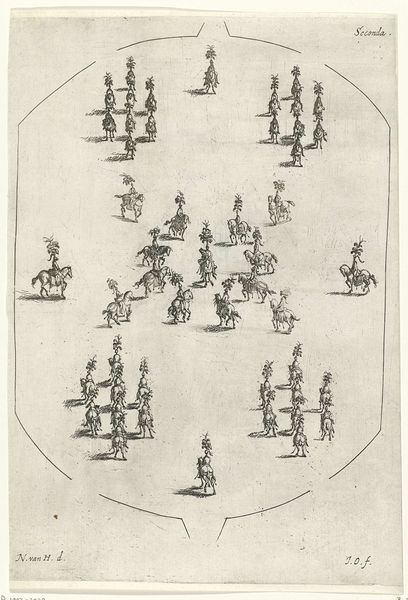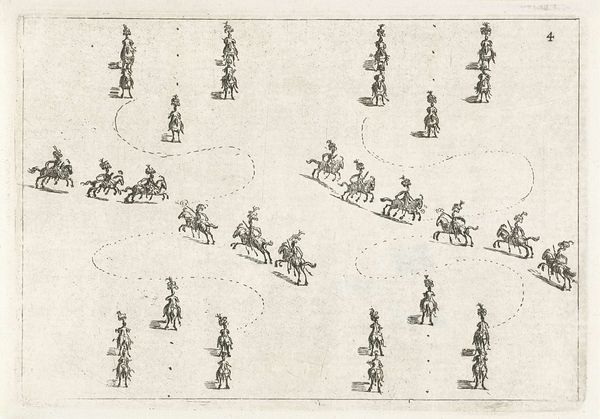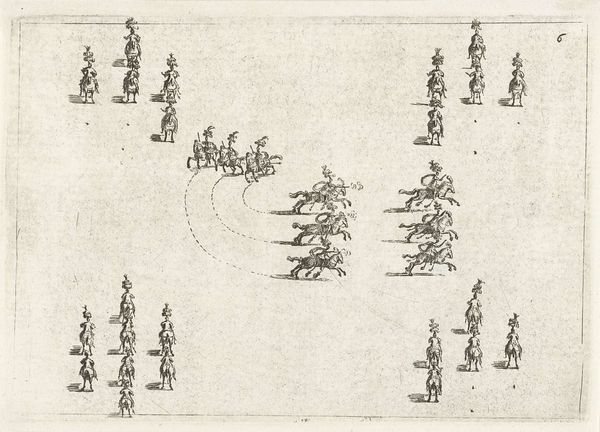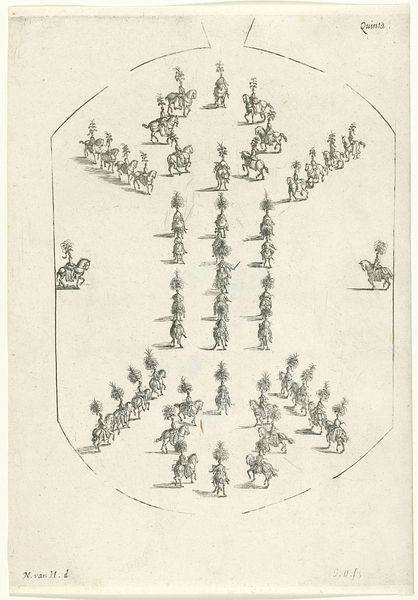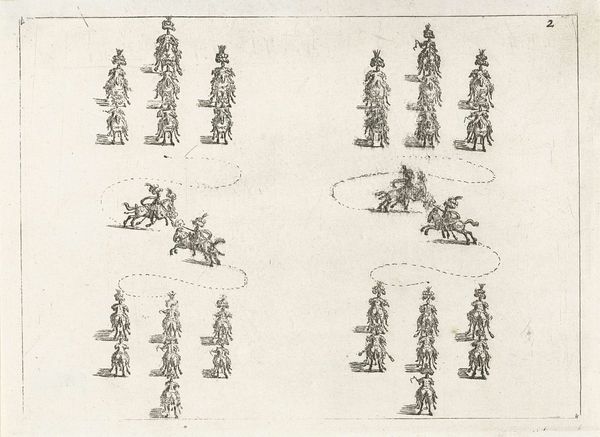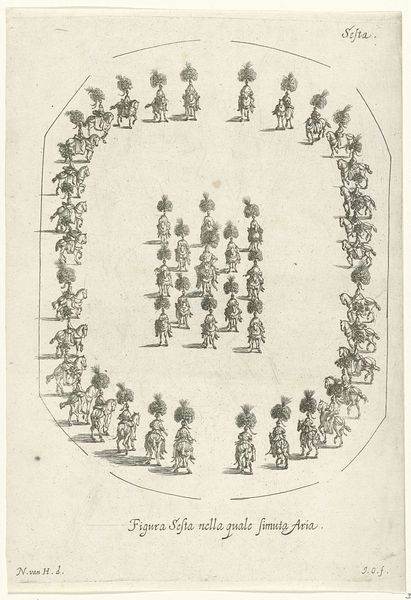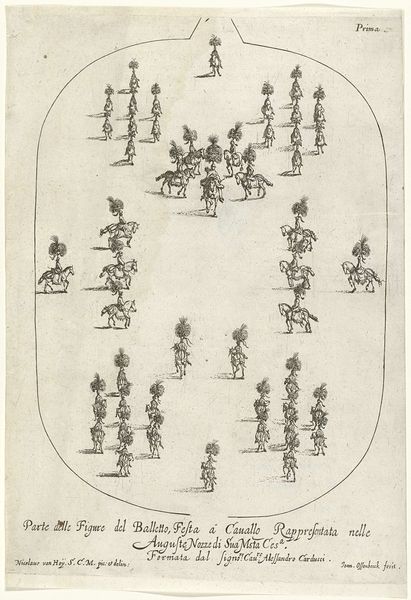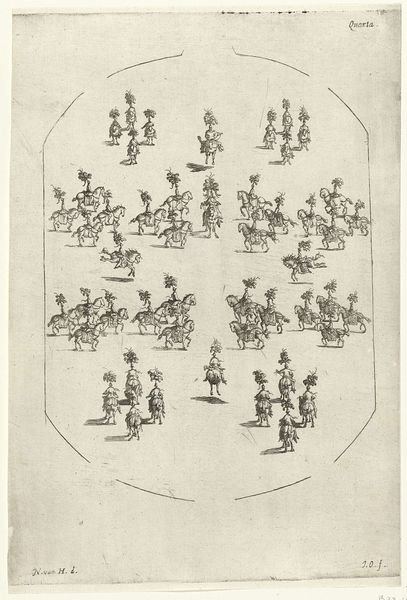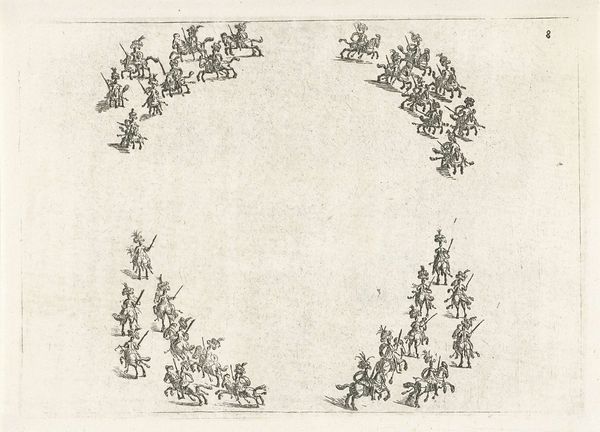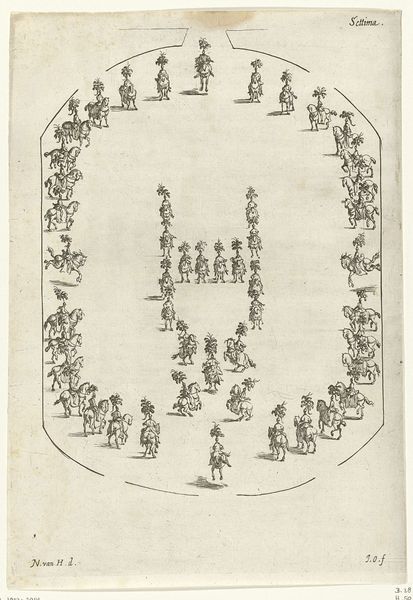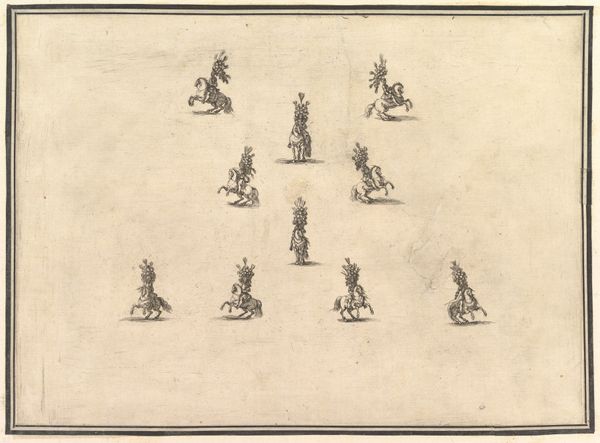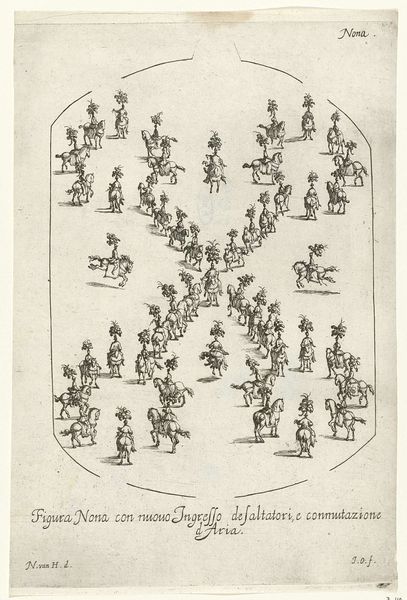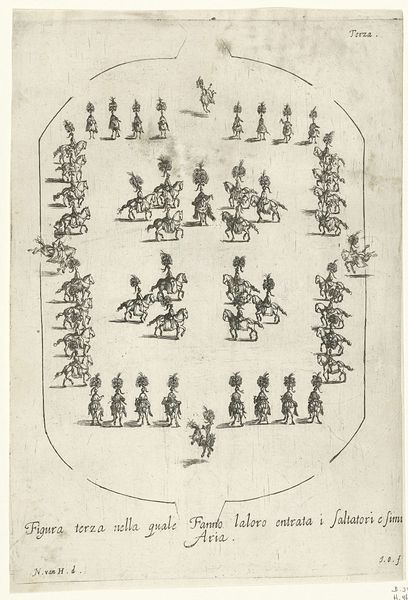
drawing, print, ink, engraving
#
drawing
#
baroque
# print
#
pen sketch
#
old engraving style
#
landscape
#
figuration
#
ink
#
line
#
engraving
Dimensions: height 139 mm, width 203 mm
Copyright: Rijks Museum: Open Domain
Curator: At first glance, there's a certain... sparseness to this. Editor: Yes, what we're seeing here is an engraving created around 1667 by Nikolaas van Hoy titled "Vier groepen ruiters en paarden in beweging," which translates to "Four Groups of Riders and Horses in Motion." The artist used ink on this print to portray these distinct groups, focusing on movement and order. Curator: Order, absolutely. The way the figures are regimented... it's like a dance diagram, or perhaps even a military exercise rendered in ink. This speaks to the culture of power, perhaps, where everything has its place in rigid formation. What do we know about the status of horses during this era and the implications of restricting these animals to these lines? Editor: The horse then was an emblem of status, an integral component of both aristocratic display and military strength. Its regimented movements as captured here reflected not only prowess on the battlefield, but extended control, a highly regarded societal asset in that era. Consider too the broader geopolitical landscape in which Van Hoy lived. These types of formations must have had real-world applicability on Europe’s 17th-century battlefields. Curator: Right. And the landscape almost disappears; the focus is entirely on these ordered groups. It suppresses a certain raw chaos into imposed, and maybe artificial, control. In some way, I wonder, how does that speak to other forms of suppression, perhaps on race and gender, considering what else was happening at this moment in history? Editor: A fascinating point. It prompts questions around the intersections of power. Curator: Ultimately, Van Hoy has presented more than just equestrians on paper; he has handed us a picture of cultural frameworks. Editor: I agree, and with close study, one might see a semiotic framework wherein specific actions echo larger issues of dominion and hierarchical management of existence in his cultural moment.
Comments
No comments
Be the first to comment and join the conversation on the ultimate creative platform.
